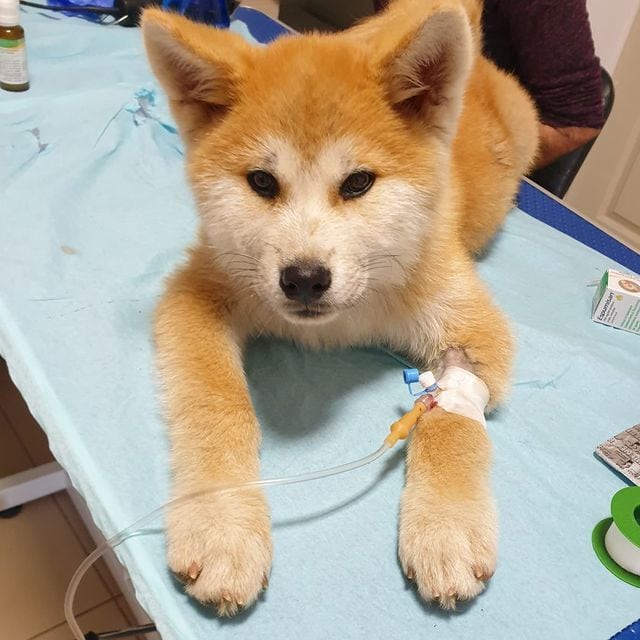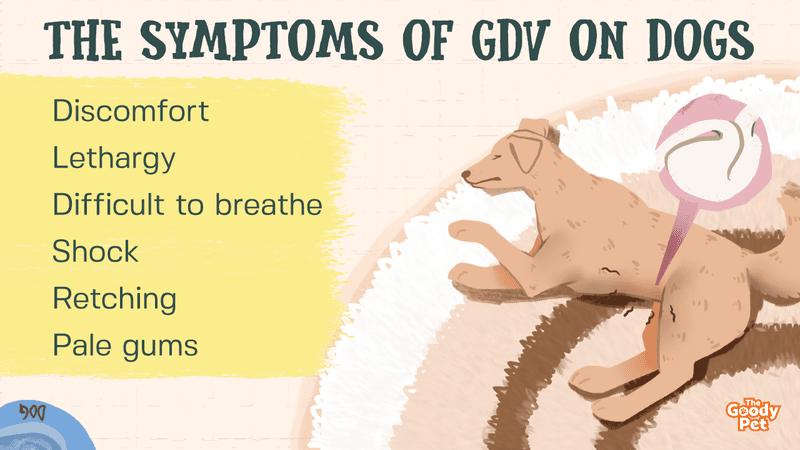Any dog can suffer from GDV, and in order to act quickly, you must have a complete understanding of this condition. GDV is a severe condition in dogs, and it can be deadly without proper treatment. But what is GDV exactly, and how do you know if your dog has it? I did some research, and here is what I found. So, what is GDV?
GDV (Gastric Dilatation and Volvulus), also known as twisted stomach, bloat, and stomach torsion, is a condition where the stomach bloats and twists itself. If your dog is anxious or bloated or vomiting repeatedly, the chances are that they may be suffering from GDV. Time is the essence, and you need to act fast to save your dog from this condition.
Worried that your dog might be having GDV? Or you’re just looking to learn more about this condition? This guide will answer all your questions and help you identify if your dog has GDV or not. With that being said, let’s dive into a deep understanding of what GDV is, its causes, symptoms, and treatment.
What Is GDV In Dogs?
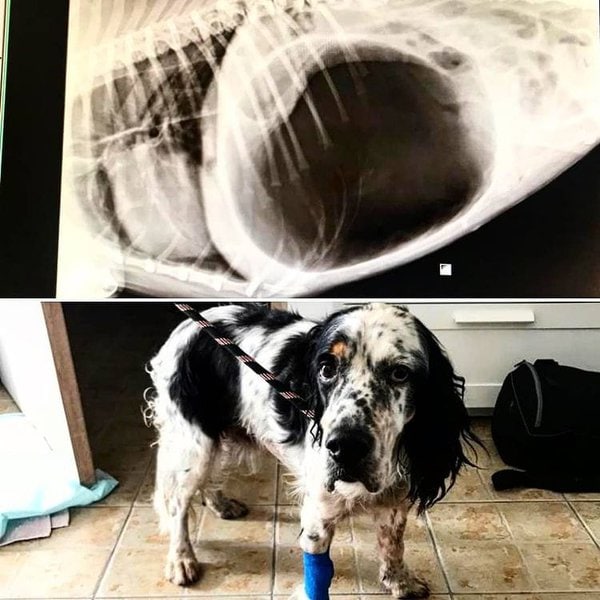
GDV is a complex condition where it involves stomach twisting and distension. This happens when the stomach is filled with food, fluid, or gas, making it swell and causing a 180° to 360° twist, which is known as volvulus.
This twisting will cause the affected stomach to constrict the blood vessels, disrupting proper blood flow or sometimes stopping the blood flow completely.
Dogs who suffer from GDV will go into shock, and since the swelling affects the chest movements, this condition can also affect breathing. If this isn’t enough, there are more scary things that happen.
For instance, as the stomach flips, it might drag the pancreas and spleen along with it, stopping the blood flow and causing the oxygen-starved organs to produce some toxic hormones.
Some of these hormones may target the heart and stop it. This is why, even in the mildest case of GDV, which is rare, dogs tend to die without treatment.
This condition is most commonly found in large and deep-chested dogs, but any dog can be affected. Since it is a life-threatening condition, the dog may require surgery to correct the condition.
Is GDV Serious?
Yes, GDV is one of the most severe and non-traumatic conditions found in dogs. If proper treatment and care are not given to a dog with this condition, it may result in death. As a result, immediate veterinary attention is needed to save the dog’s life.
What Is The Survival Rate Of GDV In Dogs?
The survival rate of GDV is dependent on many factors, including the severity of the condition, length of surgery, the degree of shock, how long the pet has had the condition, stomach wall necrosis, and cardiac problems.
In relatively mild cases, there is a 15% to 20% mortality rate of GDV. A recent study showed that if other conditions like heart arrhythmias are present, the mortality rate increases to 38%. If the tissue is damaged to a large extent, the mortality rate is between 28% to 38%.
Moreover, if the spleen were removed, the mortality rate would be between 32% to 38%. However, with early treatment, a lot of dogs (more than 80%) tend to survive.
What Are The Causes Of GDV In Dogs?
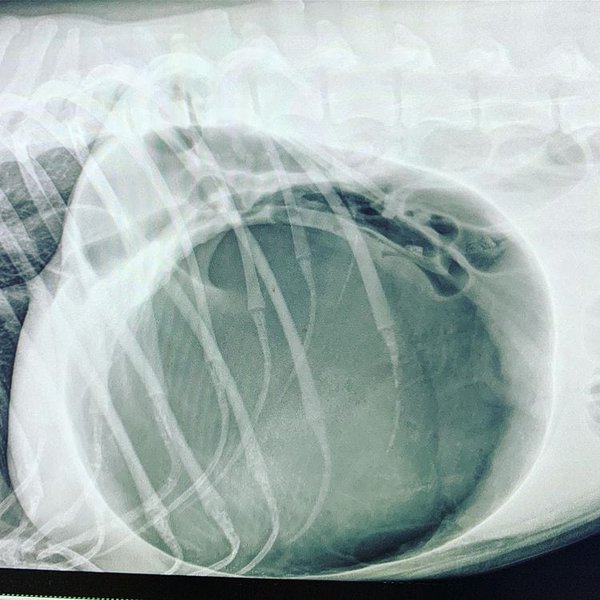
Although stress or unhealthy foods is a contributing factor to GDV, the main cause of GDV in dogs still remains unknown.
Here are some factors that increase the dog’s risk of getting GDV;
- Exercising immediately after drinking large amounts of water or ingesting large meals.
- Stress and anxiety.
- An illness that reduces intestinal motion can cause stomach dilatation and volvulus.
- Eating too fast.
- Dietary ingredients.
- Eating or drinking too much.
- Ingesting bones can block the flow of gas, fluid, and food from the stomach.
- Genetic predispositions.
- Ingesting foreign objects like corn cobs, toys, etc.
Are There Dogs Predisposed To GDV?
Yes, studies have shown that there are some dog breeds that are more predisposed to GDV than others. For example, large and deep-chested breeds are more prone to this condition than smaller breeds.
Some of the predisposed breeds include Saint Bernard, Great Danes, Standard Poodles, Irish Setters, Doberman Pinschers, Basset Hounds, Old English Sheepdogs, and Gordon Setters.
However, you must note that any dog can get this condition, even Chihuahuas and Dachshunds. Although GDV can occur at any time, studies have shown they most likely occur three hours after the dog consumes a large meal.
Interestingly, male dogs are more likely to develop GDV than females. Furthermore, dogs over seven years of age are more likely to develop this condition than puppies that are aged between 4 to 24 months old.
What Are The Symptoms Of GDV?
There are various signs and symptoms associated with GDV, including:
- Discomfort and agitation
- Lethargy
- Difficulty in breathing
- Shock
- Ping sounds from the tapered stomach.
- Nonproductive vomiting where it appears like they are vomiting, but nothing comes out, or they only remove a white froth.
- Retching
- Collapsing
- Abdominal distention is also known as swollen stomach.
- Rapid heart rate
- Excess saliva
- Abdominal pain
- Pale gums
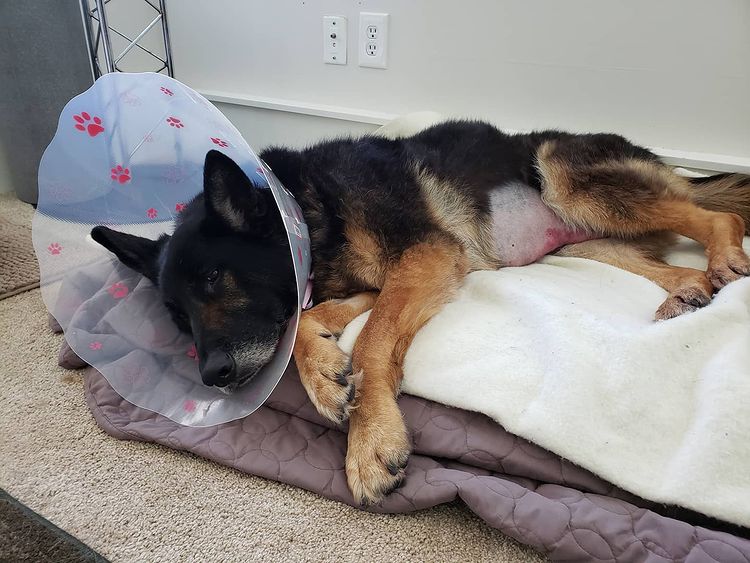
What Are The Possible Effects Of GDV To The Dog’s Body?
GDV may have several effects on the dog’s body, including;
- Rupture of the wall of the stomach.
- Prevent adequate blood flow from the abdomen to the heart.
- Prevent the lungs from expanding adequately, which causes the inability to breathe properly.
- Loss of blood on the lining of the stomach.
- Poor ventilation causes the death of cells in tissues.
Can A Dog Recover From GDV?
Yes, when you visit your vet, the first thing they do is assess your pet. This is done by taking X-rays or radiographs to determine whether the stomach is twisted or just dilated.
If the dog sees that there is a possibility of GDV, they tend to follow the following processes before the treatment commences;
- A fluid drip may be administered to dogs with GDV since they tend to experience shock and, as a result, low blood pressure. The fluid drip ensures the blood pressure stays up.
- Since GDV is a painful condition, the vet may try to relieve the pain to ensure your dog is more comfortable.
- The vet will also attempt to reduce bloating by realizing the gas from the dog’s stomach. This is done by inserting a large needle or passing a stomach tube in the stomach to release the gas. This also comes in handy to stabilize the dog and improve blood flow.
After these steps are done, it is now time for immediate emergency surgery since it is the only treatment option. This surgery will help untwist the dog’s stomach and check if there is any damage.
It is a very complex and challenging procedure that requires a high skill level, multiple medications, and close anesthesia monitoring. During the surgery, the surrounding organs, including the spleen and stomach, will be carefully inspected to ensure no damage is done. If too much damage is done to the spleen, it may be removed.
Furthermore, proper repositioning of the organs will be done. The vet will also do a gastropexy which is a procedure that involves stitching the stomach in the abdominal wall to prevent another twist in the future.
When the surgery is done, the vet will closely monitor the dog to check if there are signs of heart abnormalities, damage to the liver or pancreas, stomach perforation or ulceration, and any signs of infection. Some antibiotics and other types of medication may also be administered to the dog.
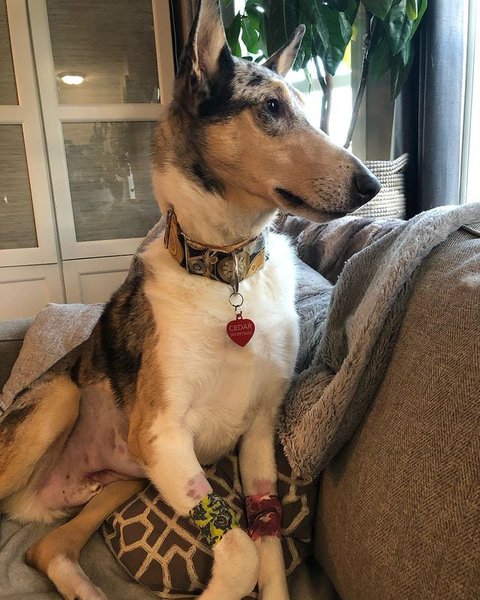
What Are The Possible Risks With GDV Treatment?
After the surgery, there are some possible risks that are associated with treatment, including;
- Some dogs may develop a bleeding disorder known as Disseminated Intravascular Coagulation (DIC). This is a life-threatening complication where small clots develop in the dog’s blood vessels.
- Some dogs develop heart arrhythmias, especially dogs that already have heart issues. As a result, the dog’s heart rate and rhythm should always be monitored.
- Infections, such as peritonitis, can happen in the abdomen.
- Some dogs may not be able to survive after the surgery, especially if they have other illnesses, resulting in death.
Can Bloat In Dogs Be Prevented?
Yes, you can always prevent the risk of GDV from occurring, especially if the dog is predisposed to this condition.
Some preventive measures you can take include;
- Consider feeding your dog two small meals instead of one large meal.
- Avoid a lot of exercise or stress after and before meals.
- Diet changes should be gradual to reduce the risk of any gas-forming and allow the gut bacteria to adjust.
- Preventive surgery.
- Visit your vet every now and then for a health checkup.
- Avoid bones or monitor while feeding bones to your dog.
- Using feeding bowls might help slow down eating.
